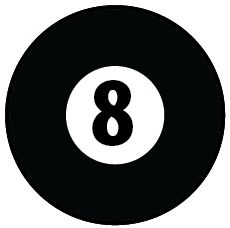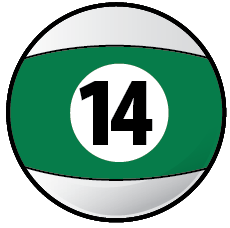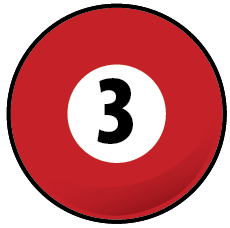~ b9 ~ 9 ~ #9 as colortones ~ ~ I maj 9 / ii -9 / V9 ~ ~ 'D' add 9 ~
|
Bread and butter in a nutshell. While our major 9th interval, pitch and sound live probably somewhere in all of the Americana sounds and styles we love, as far as the bread and butter thing goes, the funk and bossa styles deeply love Nine's own special color magic in its harmonies, and especially on a six string guitar. |
|
Guitarists have three essential chord shapes which feature the 9th colortone in their voicings. And perhaps no real surprise that with these three chords, each of our three chord types are included. Chord type is just one way we can think about chords and how they go together in progressions. Understanding chord type coupled with knowing the letter name pitches and movable forms, opens wide the harmony vista for guitar. |
In a nutshell. Well if there was going to be a thrilling apex to this page's theory discussion, just gave it away :) Oh well and so be it. So within a key center, Nine is diatonically the same pitch as Two, just now located an octave up, so everything that is Two is also Nine, give or take with our diatonic scale / arpeggio / chord abilities. Add the aforementioned 'super butter theory game changer magical abilities' of this colortone to energize, enable and help ground two entire styles of Americana music, both of which have their own giant catalogues of song coolness and historical evolutions, and add in chord type, and surely all is golden in theoryville. |
Oh ... and want to fill the dance floor in a basic blues rock setting? Get the gitfiddle player to crank up something with this chord voicing, add a bass line in the pocket, motored by a big four pop on 2 and 4, to commence activities and fill the dancefloor. Here thinking E swampy blues. Example 1. |
Know this guitar chord yet ? Cool. No ? Cool, glad to be the one to hip you to these changes. Just find your own ways and rhythms with this chunk, pepper in the 13th, maybe even got a wah wah pedal to step on ... ? |
|
Theory names: major 9th. Measuring and labeling the major Nine above our root is pretty straightforward. Those in the know will know we've just moving our diatonic second scale degree Two, up an octave. |
So why major Nine? Well, in measuring our major 9th interval from our root pitch, we ascend a full octave plus a whole step. Our numbers from our first octave, one through eight, now become 9 through 15 in our second. We simply add seven to each of our simple intervals to evolve them numerically into compound intervals. We then adjust the pitches as need be, as the accidentals we hear in the music direct us. Are the locations of the half steps same in both octaves? Yep, exactly. Please examine the pitches, their numbers and sounds. Ex. 2. |
|
||||||||||||||||||||||||||||||||||||||||||||||||
 |
Cool? Guitarists, did you pick up on the two octave scale shape in this last idea. Jazz cats dig the shape as it yields some wonderful arpeggios and the stacks of pitches of chords. Of the five basic diatonic scale shapes, here in Essentials this one is called the 'arpeggio shape.' |
Finding major 9. So it just seems that whenever we can write out the pitches with corresponding numbers, it's amazing how quickly the pitch we need just pops right up. Example 2a. |
|
 |
So where is Nine the music. In melodies, just about everywhere stylistically. For it is the very often the penultimate pitch before closing on the tonic. Chords? Not so much in the traditional folk or bluegrass, although in our modern times we surely could find the tonic One or Two chord with an added ninth. In a funk jam we'd find a dominant 9th chord color creating the pocket. Nine can also be a very powerful melodic player, especially in the minor tonality of blues, rock, pop and jazz. There's a passion 'longing' with Nine like no other. |
Nine in the melody. Melodies in the minor key that focus on the 9th take on their own unique emotional character. There's a sense of longing, a searching with a warmth of our hearts that lives in the Nine color. In this next idea, a Jacmuse original, we start our chord progression on Four and work our way back to resolve to One, all in the key of D minor. Our melody uses the Nine to end the line. Example 3. |
 |
Even with just the melody. Even without the changes, that longing quality of the Nine shines right out of the melody line, like a beacon of light to universal hearts alike or sending a message from one heart to another. |
9 / 8 resolution. In this next idea we simply run past the octave a bit and work our way back. Easiest way to illustrate this might be to arpeggiate Two to get us quickly up past the octave, then 9 - 8 resolution. Example arpeggio resolving to One. Example 4. |
 |
Cool? The theory / numbers is very straightforward. The last part of the phrase is from longtime Ellington collaborator B. Strayhorn's "Take The 'A' Train." Do run this 'tag' through the 12 major keys centers. |
|
b7 / 9 / 8 blues. In this next idea we build a blues lick with the 9-8 idea just and transpose it through its common changes. Example 4a. |
 |
Cool? Nice to get a bit more mileage out of one idea. Sure a solid way to move up the neck too. These kinds of ideas are at the core of the blues. Running any idea through the 12 bar form writes us a song of sorts, and with some steady clicks, finds us playing music even when we're just practicing. |
Nine in the line; 9 / 8 / b7 / 8 in minor. In this next idea we go back to our roots in 'A' minor to find this rather powerful idea with the 9th. Simply as a passing line over the 'A' minor triad, as we add the color tones in the line. Example 4b. |
 |
Cool? Lay this on top of bass and drums and commence to jam, dancers up and find a spoken word artist to spin some tales of the life and times of your community. |
Nine in the line; b3 / 2 / b7 / 1 in minor. This last idea in these motions with 9 in the line is a potent one. Must go way back, it's just a hoot to play, but go gently as it evokes a deepness and gravity of heart very quickly. Here in 'E' minor, tricky at first, with a potential ton of variations. Example 4c. |
 |
Cool? Thinking of this last lick in the key of 'E' minor, this easily becomes a One chord going to Four, settling in to 'A' minor as in the example 4b above. Just combine the two for a song of your own design. |
Major 9 as a common tone. As cool as it might ever get, fairly straightforward chord shapes yield endless dance / vamp powers of colors. In 'C' major, holding its major 9th, 'D' between tonic One, bIII maj 7, Four and Five. Example 5. |
 |
Cool? Might slow it down a bit depending, these are true jazz chords so takes a spell to master. The like does sound very 'intro or outro- ish' too ? Make anything into a vamp yes ? Regardless, using a common tone glues the chords up right nice and of course, these are all movable shapes to boot ! |
Nine in the harmony. Turns out that all three of our core chord types; Tonic / One, Two and Five, each in their own unique way is having an amorous affair with colortone Nine. Diatonically generated on all three chord types in a major key center, Nine as a chordal color tone is surely an essential American hue. Thinking by chord type in 'C' major. Example 5a. |
 |
Out of frets ? Just move the shapes on down to better spacing. We love these movable chunks of color. Again, jazz shapes so big on color, and not much gravity. Also, we have to go to Dorian minor, to get the 9th colortone on all three of the One / Four and Five chords. Which we get in major, huh. Now what is up with that ? |
|
Find some other voicings. Those last few chords are a bit thin yes? Here's some thicker sounding chords, one of each of the three chord types featuring the 9th color tone. Example 5b. |
 |
Better? What nice colors do these 9th's do bring :) We love them chunks of harmony :) |
Bossa nova loves Nine. Emerging into global popular music in the later 50's and onward, the bossa nova sounds and styles have become a very large stripe on our Americana musical flag. In up to date modern day Americana musics, bossa has evolved and now can include much of the Latin flavored influences that permeate all of our American styles. |
For us guitarists, at the core of this style of playing we can find a couple of moveable chord voicings that can instantly create a bossa / Latin groove right out of thin air. Traditionally played on a nylon stringed, a classical Spanish styled guitar, these voicings each allow the bossa alternating root / Five bass motion, so essential to creating the original bossa vibe of the 50's and 60's and onward to today. |
Tonic bossa Nine chord. This next chord is probably the top 'go to' bossa tonic chord in songs written in a major key and features the major 9th interval on top. Here written in C major and a movable chord form, it alternates the bass pitches (x = the 5th). Example 6. |
scale degrees |
root (1) |
2 |
3 |
4 |
5 |
6 |
7 |
8 |
. |
scale pitches |
C |
D |
E |
F |
G |
A |
B |
C |
. |
arpeggio degree |
root (1) |
3 |
5 |
7 |
9 |
11 |
13 |
15 |
. |
arpeggio pitches |
C |
E |
G |
B |
D |
F |
A |
C |
. |
 |
The Girl From Ipanema. This last shape and motion can set the tone and pace for Jobim's gem and signature tune about life on the beach in Ipanema, Brazil. |
|
Bossa nova minor Nine chord, Two chord type. Have a favorite chord? This next one just might become one. Simply a minor 7 chord with an added 9th. Please examine the pitches as we build our minor 9th chord from the pitches of D natural minor. Example 5a. |
scale degrees |
root (1) |
2 |
3 |
4 |
5 |
6 |
7 |
8 |
. |
scale pitches |
D |
E |
F |
G |
A |
B |
C |
D |
. |
arpeggio degree |
root (1) |
3 |
5 |
7 |
9 |
11 |
13 |
15 |
. |
arpeggio pitches |
D |
F |
A |
C |
E |
G |
Bb |
D |
. |
Voicings. In making these pitches create our next chord shape for guitar, we have to initially leave out the 5th while keeping the rest. Is leaving out the chord's 5th of a voicing problem? No, at this level, the 3rd and 7th tones are more a must, determining whether a chord is major or minor based by its triad, and quality of its 7th. Three and 7th also determine chord type, which in theory, can become a glue of sorts that holds the theory together, giving us a sense of how any chord will function in diatonic and conventional harmonic progressions. |
Luckily again, with this minor 9 chord, we get the same sort of bass motion as with our tonic shape just above. We can alternate the bass pitch gaining the cool root / Five motion (x = the 5th). Those in the know will use this shape for the guitar and bass combo motions for Paul Desmond's essential classic "Take Five." Ex. 5b. |
|
 |
2nd inversion. A musical associate of here in Alaska plays nearly all of his chords in second inversion, meaning that the 5th of the chord is the bass note. He says it keeps him out of the bass players way and thicken's up the sonority of the group. These 9th chord voicings we're examining here are perfect for just such an approach to playing changes in the band. Please examine these inversion voicings. Example 5c. |
 |
Clear how the shape evolves? Cool. That the second and third shapes are also other chords, as named from their included lowest note or root pitch, is just another part of our puzzles to solve and keep straight. Thus the good doctor's quip to 'think from the root of the chord ole' boy and you'll never get lost.' |
Bossa nova dominant Nine chord, Five chord type. Often referred to as a 'desert island' chord, this next chord shape easily bossafies almost any groove. And speaking of groove, we've finally worked our way back to the funky style part of this discussion started above. If the minor ninth chord just above is under your fingers, then just raise the third of the chord a half step and we're golden here. Please examine the pitches and sounds of our V9 (G9) chord in C major. Example 5d. |
|
scale degrees |
root (1) |
2 |
3 |
4 |
5 |
6 |
7 |
8 |
. |
scale pitches |
G |
A |
B |
C |
D |
E |
F |
G |
. |
arpeggio degree |
root (1) |
3 |
5 |
7 |
9 |
11 |
13 |
15 |
. |
arpeggio pitches |
G |
B |
D |
F |
A |
C |
E |
G |
. |
 |
Same deal with the alternating bass yes ? Cool. |
The ultimate funk chord. The first real band I rehearsed and gigged with was an 80's funk band. Hired as the rhythm guitarist, to play changes behind the soloists, this 'E9' was staple chord. The voicing is a solid, little chunk of harmony that gets thrashed around, often with a light pick towards the bridge pickup, it locks right in with drums and open note 'E' on bass, to get the dancers up. Here in the key of E blues, this root position chord easily runs up and down the neck to cover all the funky keys. Example 6. |
 |
Quarter notes on the downbeat ... half step lead in to restart the phrase. Always a good rhythm place to start with the clicks. Oftentimes it's just easier to play the groove than try to notate it yes? As funk runs to 16th note, think 'wac a doo dle' ... as '1 e an da' and repeat. |
The half diminished chord within. A secondary coolness that lives in the V9 chord is the half diminished or minor 7b5 chord that lives in the upper structure of V9. We often hear it in funk and blues settings with a Strat, when the bass player is covering the roots of the chords in their lower harmonic structure. Please examine the pitches and sound of this color in a funky, Latin vamp type setting. Example 7. |
scale degrees |
root (1) |
2 |
3 |
4 |
5 |
6 |
7 |
8 |
. |
scale pitches |
E |
F# |
G# |
A |
B |
C# |
D |
E |
. |
arpeggio degree |
root (1) |
3 |
5 |
7 |
9 |
11 |
13 |
15 |
. |
E 9 |
E |
G# |
B |
D |
F# |
. |
. |
. |
. |
half diminished |
G# |
B |
D |
F# |
 |
Catch the back and forth with the 'x' marks the Latin spot ? Cool. Tis' a cooker indeed :) So two grooves with the one shape and a flick of the finger, that' cool. |
A Two / Five cell. This dominant V9 chord shape pairs with a similarly shaped Two chord creating a true butter, Two / Five pairing. Coming from between the 'arpeggio' and 'Dorian' shapes, master this next motion for a ton of coolness, and leaning towards the jazz edge of the style spectrum. Example 7a. |
 |
Smooth huh ? Yea, moving shapes up and down frets, up and down or across the strings? All good. And get a few extra miles out where the rubber meets the road. |
Additional dominant / V9 voicings. Here are a couple of additional essential V9 chord voicings for the emerging modern guitarist. The first two are fairly common as Five chords in the Two / Five / One cadential motions. The second two voicings live a bit deeper into the harmonic vocabularies. Just nice to have options. Example 8. |
 |
Review and forward. The colortone we call Nine is at its theory core simply a major second up from our chosen root pitch, but now moved up an additional full octave. We can diatonically create the Nine colortone on each of our principle chord types; One / Two and Five. The dominant ninth ( V 9 ) chord is a core funk dance chord. It's also an essential color for the bossa nova and Latin styled harmonies, especially for guitar. So while mostly a blues, bossa pop and jazz color, we can also locate a half diminished chord in the upper structure of V9, and knowing that half diminished is one pitch away from fully diminished of V7b9, just helps to energize the round and round magic, just the way our music theory goes with arpeggios and chords :) |
"It's amazing how much you can learn if your intentions are truly earnest." |
wiki ~ Chuck Berry |
 |
 |
|||||||||||
 |
 |
 |
 |
 |
 |
 |
 |
 |
 |
 |
 |
 |
References. References for this page's information comes from school, books and the bandstand and made way easier by the folks along the way. |
Find a mentor / e-book / academia Alaska. Always good to have a mentor when learning about things new to us. And with music and its magics, nice to have a friend or two ask questions and collaborate with. Seek and ye shall find. Local high schools, libraries, friends and family, musicians in your home town ... just ask around, someone will know someone who knows someone about music and can help you with your studies in the musical arts. |
|
Always keep in mind that all along life's journey there will be folks to help us and also folks we can help ... for we are not in this endeavor alone :) The now ancient natural truth is that we each are responsible for our own education. Positive answer this always 'to live by' question; 'who is responsible for your education ... ? |
Intensive tutoring. Luckily for musical artists like us, the learning dip of the 'covid years' can vanish quickly with intensive tutoring. For all disciplines; including all the sciences and the 'hands on' trade schools, that with tutoring, learning blossoms to 'catch us up.' In music ? The 'theory' of making musical art is built with just the 12 unique pitches, so easy to master with mentorship. And in 'practice ?' Luckily old school, the foundation that 'all responsibility for self betterment is ours alone.' Which in music, and same for all the arts, means to do what we really love to do ... to make music :) |
 |
"These books, and your capacity to understand them, are just the same in all places. Always bear in mind that your own resolution to succeed, is more important than any other one thing." |
|
Academia references of Alaska. And when you need university level answers to your questions and musings, and especially if you are considering a career in music and looking to continue your formal studies, begin to e-reach out to the Alaska University Music Campus communities and begin a dialogue with some of Alaska's finest resident maestros ! |
|
~ |












